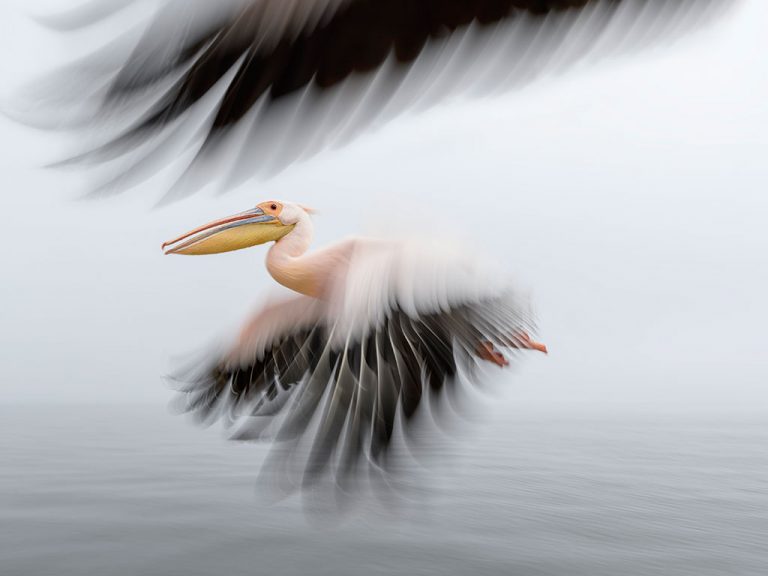Blurring movement communicates speed and brings your subject to life. Using this image from Marsel van Oosten, Teagan Cunniffe tells you how to get it right.
Also read: 5 pro photography tips

Equipment Settings: Nikon D5, Tamron SP 24-70mm f/2.8, ISO 50, f/16, 1/30 sec. Image credit: Marsel van Oosten
Marsel says…
I took this image in Walvis Bay, Namibia. Conditions were perfect – medium-dense fog and no wind gave a subtle background with subdued light and tones, inspiring me to capture the pelicans with a soft, blurred look. Instead of trying to isolate one bird I deliberately included part of another to add depth and experimented with shutter speeds to get this result. squiver.com
Take it yourself
To create blurred scenes that look professional (and intentional!) you need to keep part of your subject sharp. Here’s how to do that with a technique called panning.
Equipment
A tripod is essential. One with a fluid head (I use a Manfrotto Live Video Fluid Head, R2 395 at ormsdirect.co.za) is even better. Use a large memory card (16GB or more) – there’s a lot of trial and error in getting the perfect shot!
Settings
If your camera has an image-stabilising function, switch it on. Use Shutter Priority (Tv) or Manual and set your shooting mode to continuous.
A slow shutter speed is vital for motion blur so start with a shutter speed of 1/60 sec (you’ll adjust this by trial and error as you go). To compensate for the increased light due to your longer exposure time, choose a narrow aperture (f/8 – f/22) and a low ISO.
Practical
Find a moving subject. Start with something easy, and regular, such as traffic. Set your tripod up so that your subject(s) movement will be directly across the front of your lens.
Focus on the part of the subject you want to be sharp as it enters your field of view (for animals the face and eyes are best) by half depressing your shutter.
Track your subject and start shooting as it moves by panning – moving the camera smoothly on its axis (your tripod), keeping the shutter down on continuous fire. Try to match their speed with your movement. Generally, your subject will be sharpest when it is directly in front of your lens (essentially the mid-point of your pan). Keep tracking your subject until it’s out of sight. Like a golf swing, following through will keep your movement fluid and lines clean.
Review your image (this is where the fun begins) and try again. Adjust the speed of your pan until the focal point of your image is sharp. At the same time, adjust your shutter speed to increase or decrease the amount of blur you want in your image (subtle or exaggerated).
Getaway’s top tips
Starter tip: Move smoothly with your whole body, not just your hands.
Amateur tip: Use a neutral density fi lter to further reduce exposure in bright daylight hours and enable even slower shutter speed.
Pro tip: Use a slow-sync fl ash (explained next in ‘Know your Stuff ’) to ‘freeze’ a portion of your subject’s motion in time.
This expert advice first appeared in the February issue of Getaway magazine.
Get this issue →
Our February issue features 12 of the best tented-camps around the country, fun-filled water adventures in Northern KZN, Madagascar by motorbike plus a guide to finding everyday magic in underrated Lisbon.
You may also like
Related Posts
Street photography is as much about recording moments in time as it is about telling...
read more
Using a drone not only changes your perspective but the way you shoot too....
read more
Catching a bird doing anything but perching on a branch might be the hardest photographs...
read more